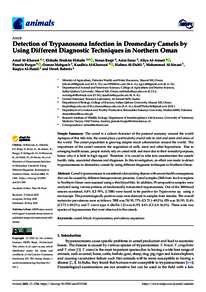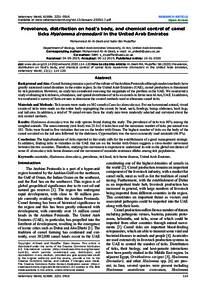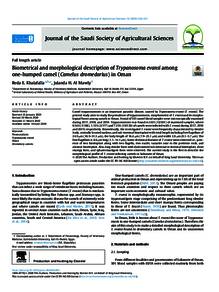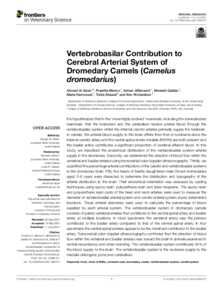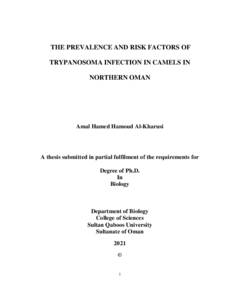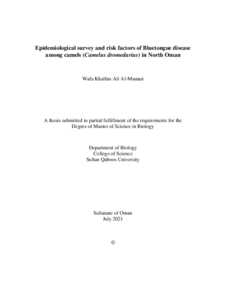Document
Detection of trypanosoma infection in dromedary camels by using different diagnostic techniques in northern Oman.
Identifier
DOI: 10.3390/ani12111348
Source
Animals. v. 12, 11, 1348
Contributors
Elshafie, Elshafie Ibrahim., Author
Baqir, Senan., Author
Faraz, Asim., Author
Al-Ansariyah, Aliya., Author
Burger, Pamela., Author
Mahgoub, Osman., Author
Al-Kharousiyah, Kaadhia., Author
Al-Duhliyah, Halima., Author
Al-Sinani, Mohammed., Author
Al-Hataliyah, Raqiya., Author
Roberts, Derek., Author
Country
Switzerland
Publisher
MDPI.
Gregorian
2022-06-01
Language
English
Subject
English abstract
Camel trypanosomoses is considered a devastating disease with severe health consequences that can be caused by different hemoprotozoan parasites. Camel samples (388) from the five regions in Northern Oman were assessed using a thin blood film. In addition, 95 seropositive samples were analyzed using various primers of mechanically transmitted trypanosomes. Out of the 388 blood smears examined, 0.8% (CI 95%, 2/388) were found to be positive for Trypanosoma sp. using a microscope. The parasitologically positive cases were detected in samples from females. The overall molecular prevalences were as follows: TBR was 78/95, 77% (CI 73.1–89.2%); ITS was 30/95, 31.6% (CI 73.1–89.2%); and T. evansi type A (RoTat 1.2) was 8/95, 8.4% (CI 4.0–16.0%). There were two species of trypanosomes that were observed in the camels.
ISSN
2076-2615
Resource URL
Category
Journal articles

